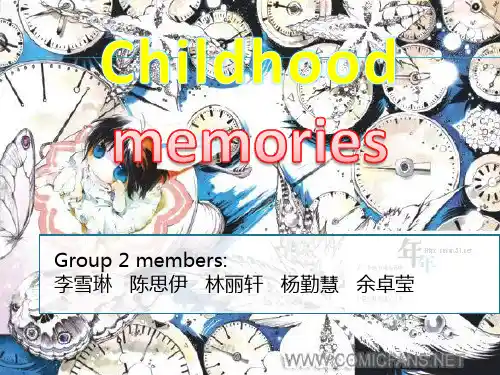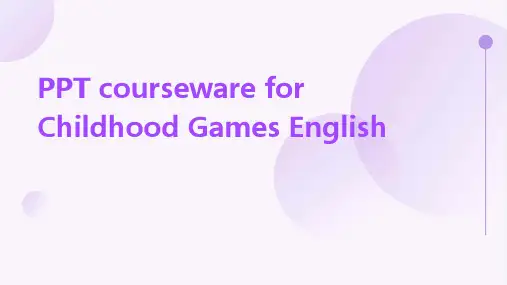童年游戏的英文表达(课堂PPT)
- 格式:ppt
- 大小:8.41 MB
- 文档页数:68
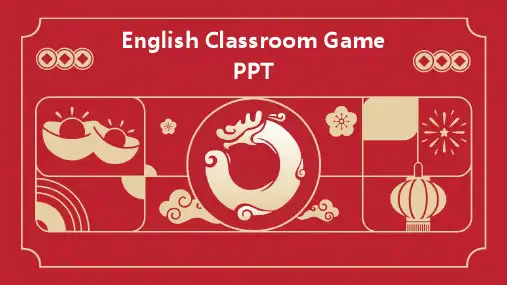
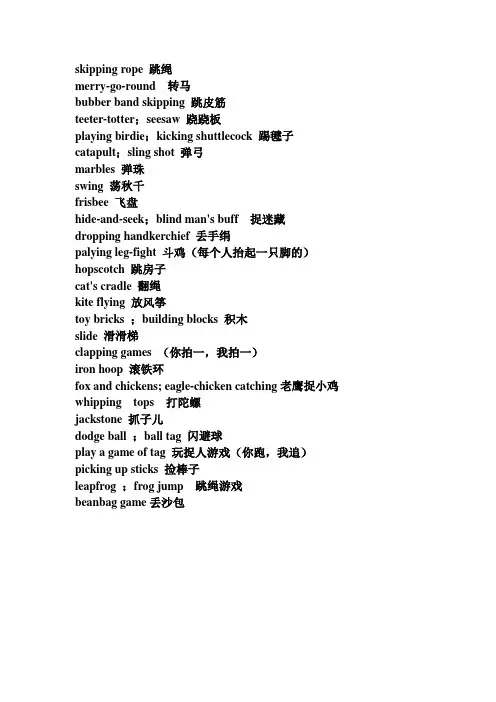
skipping rope 跳绳merry-go-round 转马bubber band skipping 跳皮筋teeter-totter;seesaw 跷跷板playing birdie;kicking shuttlecock 踢毽子catapult;sling shot 弹弓marbles 弹珠swing 荡秋千frisbee 飞盘hide-and-seek;blind man's buff 捉迷藏dropping handkerchief 丢手绢palying leg-fight 斗鸡(每个人抬起一只脚的)hopscotch 跳房子cat's cradle 翻绳kite flying 放风筝toy bricks ;building blocks 积木slide 滑滑梯clapping games (你拍一,我拍一)iron hoop 滚铁环fox and chickens; eagle-chicken catching老鹰捉小鸡whipping tops 打陀螺jackstone 抓子儿dodge ball ;ball tag 闪避球play a game of tag 玩捉人游戏(你跑,我追)picking up sticks 捡棒子leapfrog ;frog jump 跳绳游戏beanbag game丢沙包Hide-and-seek or hide-and-go-seek (or, in Scotland, hidey) is a variant of the game tag, in which a number of players conceal themselves in the environment, to be found by one or more "seekers". Numerous variants of the game can be found worldwide.[edit] GameplayThe game starts with all players in a central location, indoors or out. One player is given the designation of "it". There are two portions to the game: the hiding, where all the players except "it" locate a place in which to hide, and the seeking, where "it" attempts to locate as many of the players as possible. The overall objective is to remain undiscovered by "it".The hiding portion of the game begins with "it" using a method to avoid seeing the other players hiding, and counting out loud for a predetermined number of seconds, often with the aid of a word that takes about one second to say (e.g., "one-Mississippi, two-Mississippi..."). During the count, other players locate a place to hide. When the counting is completed, the "it" player usuallyannounces the start of the seeking portion by shouting a phrase such as "Ready or not, here I come!". "It" then begins a search for the hiding players.When all players have been found or caught, the next game's "it" is usually the first player to be found. Alternatively, the players can agree that the last person to be discovered or tagged will become the next "it".Occasionally, the "it" may call out "Ollie Ollie Oxen Free" to say that he has given up, and the players leave their hiding places. [edit] V ariantsIn some variations players may move to other hiding spots while "it" isn't looking, and those who can remain hidden the longest are considered to be the best players.In a more active variant, hide and seek can be combined with the game of tag. Instead of "it" simply spotting players, he or she has to tag them instead to get them out. Hiders can make a dash for 'Home Base', which is usually a landmark next to where whoever is "it" counts off. Touching the base area makes a hider safe, and the aim of the game is to touch base without being tagged; this game was, and may still be known as Pom Pom Home by school children in Berkshire (UK), which may be a variant of Pom Pom Runaway, as outlined below.Another form similar to the above game involves tagged players becoming another "it". Rather than having a base, the aim is simply to survive as long as possible without being tagged, and the last one to not be tagged is the winner.A derivative game is called Sardines. In this variant, only one person hides and the others must then find the person that's hiding and hide with them. The last person to find the group that's hiding is the loser. If playing indoors, turning the lights off may make it easier to hide large groups of people. A. M. Burrage calls this version of the game 'Smee' in his 1931 ghost story of the same name.[1]Another name to call it is Y aki 123, where there is a home base in which the person who is it guards but has to also look for the players, the hiders try and make their way to the home base either undetected or if seen by the person who is it must get to homebase before them and call out Y aki 123. The hiders who are victorious have to stay near homebase til the end of the game, but they can also help the other hiders by distracting the person who it is.。
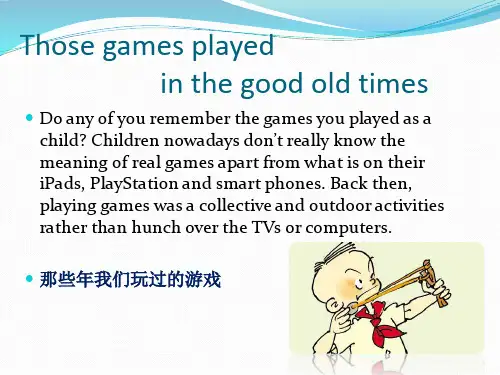
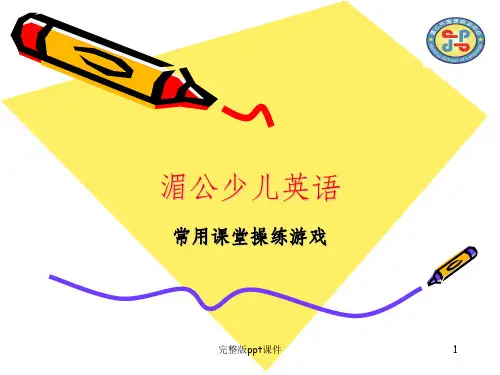


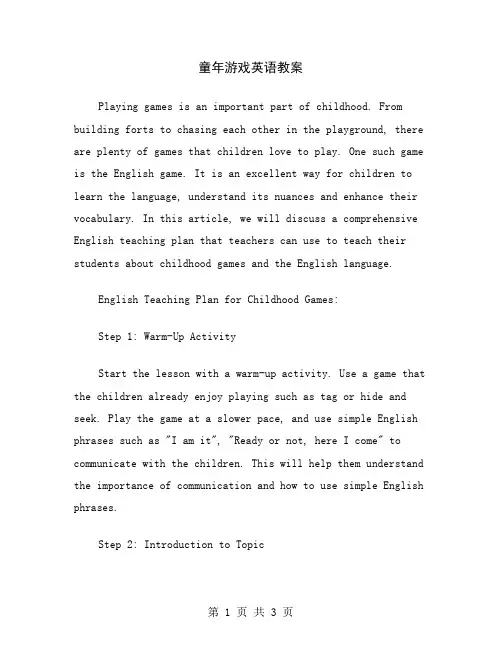
童年游戏英语教案Playing games is an important part of childhood. From building forts to chasing each other in the playground, there are plenty of games that children love to play. One such game is the English game. It is an excellent way for children to learn the language, understand its nuances and enhance their vocabulary. In this article, we will discuss a comprehensive English teaching plan that teachers can use to teach their students about childhood games and the English language.English Teaching Plan for Childhood Games:Step 1: Warm-Up ActivityStart the lesson with a warm-up activity. Use a game that the children already enjoy playing such as tag or hide and seek. Play the game at a slower pace, and use simple English phrases such as "I am it", "Ready or not, here I come" to communicate with the children. This will help them understand the importance of communication and how to use simple English phrases.Step 2: Introduction to TopicIntroduce the topic of childhood games to the students. Explain that they will be learning about the different games that children of their age used to play in the past. Use interactive learning methods such as videos, pictures or storytelling to make the topic more engaging.Step 3: Vocabulary BuildingUse flashcards or pictures to help the children understand the vocabulary related to childhood games such as 'marbles', 'hopscotch', 'hide and seek'. Encourage them to use these words to express themselves during the lesson.Step 4: Listening and Speaking ExercisesUse songs, rhymes or stories to help the children understand the pronunciation and enunciation of different words. Have the children to repeat the words several times to help them work on their pronunciation. Use interactive listening exercises to reinforce the new vocabulary words.Step 5: Reading and Writing ExercisesUse age-appropriate reading materials for the children, and have them identify different words and phrases from the story. Use writing exercises such as notes or letters to helpthe children practice writing in English. Encourage them to use the new vocabulary words in their writing.Step 6: Interactive GamesUse interactive games such as crossword puzzles, word searches or trivia games to reinforce the new vocabulary. Encourage the children to work in teams and have them compete against each other to make the games more engaging and interactive.Conclusion:Playing games is an essential part of childhood, and it is an excellent way for children to learn new things. The English game is a fun and interactive way for children to learn the English language. By following this comprehensive English teaching plan, teachers can help their students learn about childhood games and improve their English language skills.。
